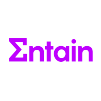Case Studies
Case Studies
Here, you can find the case studies that appear throughout the Untethered World report.



GE Gas Power
Tackling Inflation Head-On
Working through an inflationary environment is an obstacle that GE Gas Power has overcome in the past. But after decades of price stability, few GE employees have lived through a version of this latest black swan event. Dealing with inflation requires different muscles, so the company decided to invest in its people. Raj Thakkar, vice president of sourcing, and his colleague Randy Rowe, executive sourcing operations and transformation leader, quickly developed a program to bring their teams up to speed during this latest shock to the business. “In these turbulent times, you have to look at the whole picture when you analyze the impact on operations and customers,” said Rowe. Beginning in early 2021, employees underwent a three-part training module designed to prepare them for a difficult inflationary environment.
The program begins with what Thakkar calls “The Golden Rules.” A few senior sourcing team members created a list of 12 constructive and practical ideas to respond to various inflation challenges—a handy cheat sheet that can be applied to any inflationary situation. Click here to review four of the ideas. Training sessions are then conducted regarding these 12 ideas. A few examples include collaborating with the engineering team and suppliers to alternate material, “should cost,” and near-shore diversification
To supplement this internal training, GE partners with a third-party firm, which creates a standardized approach for the procurement sourcing process while taking the current situation into account. Covering 12 vertical skills through 16 modules, the course—now led by employees—teaches fundamentals and templates focused on spin analysis, supply market analysis, supplier profiling, clean sheeting, the negotiating process, ongoing supplier management, and more. Enrollment spans multiple levels of the organization, with an emphasis on entry-level and midlevel employees, along with some more experienced team members looking for a refresher. So far, 80 employees have gone through the academy, with 40 more slated for the second half of 2022. GE plans to enroll 300 people total in this training, and all of them incorporate their current projects into the training.
The procurement function has an enormous impact on safety, quality, and cost. Thakkar and Rowe understand that the ongoing volatility means their employees need to be mentally prepared. So, rounding out GE’s training is strong mentorship, with an emphasis on soft skills and mental health. Senior leaders coach fellow team members on interpersonal skills, resilience, trust building, and more. GE’s leadership and human resources teams realized they also needed to focus on helping employees develop resilience, so team members received coaching on social interaction and how to build trust in today’s virtual environment. It was more important than ever to activate the community, explained Rowe. “In a marketplace with high inflation, it is critical to upskill and educate our people to prepare them for the uncertainty to come,” he said.

Entain
Responsive Leadership
In 2020, executives around the globe found themselves called to publicly demonstrate their commitment to their employees. It was the latest proof point that leaders must stand for more than just the bottom line, and that such qualities as empathy and purpose had become the new standards for a successful leader.
Amid this turbulence, Simon Zinger, group general counsel for Entain, decided to craft a vision statement of sorts—The General Counsel Oath—that would serve as a touchstone for legal leaders, compliance officers, and ethics officers. Zinger insisted that what leaders needed in this moment was not a to-do list, but a “framework for how [they] behave.”
“It was quite a chaotic time, in the sense that you had a number of companies making commitments,” Zinger said. “You had a number of general counsels making commitments as well. And I was just looking and searching for the right path or the right answers or the right approach, or the right framework, and I couldn’t find it.” So he drafted what he thought of as a “roadmap”—not just for himself and his team, but for others like him who felt unmoored.
In addition to providing guidance on diversity, equity, and inclusion topics, the oath helped articulate, in Zinger’s words, “How you work with your team, how you work with your colleagues, how you help your company have a more positive social impact—and then how you treat other people just as human beings.” When the oath was first launched in August 2020, Zinger shared it with a number of journalists and other general counsels, which resulted in not only press buzz around this new framework, but also endorsement of the oath by several notable organizations.
Some leaders have shared the oath with their own teams, “using it as a platform to explore the areas in the oath and to communicate their personal commitment as the team leaders,” he said, while others have used it for more personal and professional development or guidance. Asked what section is most meaningful to him, Zinger said, “The last line: ‘I recognize that my skills and leadership position are privileges, and I will use them to advance the well-being of the people, organizations, and communities with whom I interact.’” A downloadable version of the oath can be found here.

Medtronic
Operationalizing a Crisis
When COVID-19 wreaked havoc in March 2020 and companies scrambled to adapt, medical technology company Medtronic had just updated its approach to crisis management. It seemed like good luck, but it came out of bad luck. The company, the largest employer in Puerto Rico other than Walmart, had suffered massive damage to its facilities due to Hurricane Maria. The disaster pushed the Medtronic team to build out a robust crisis-response function that has been able to act on the multitude of challenges facing business today. Said Anita Tuch, vice president of enterprise risk & facilities: “It took crisis planning from the back room to the front room.”
Unlike many other companies, which often run their crisis response teams out of HR or communications, Medtronic decided to put its team under the operations function, dividing it into three segments: enterprise risk, crisis management, and business continuity. “Enterprise risk is higher-level—what gets reported at the board level,” Tuch said. “Inability to deliver on the portfolio or missing out on game-changing developments are examples.” Crisis management consists of coordinating responses among people, operations, and reputation teams. Business continuity efforts focus on the identification of critical operations, the order of restoration, and recovery strategies. All of these groups now report to Tuch.
But what qualifies as a crisis? That determination is made by a crisis filter team—typically Tuch and a fellow vice president—which uses a list of criteria and has two executive sponsors. The two sponsors are executive committee members: Medtronic’s CHRO and executive vice president of global operations. The actual crisis management team includes communications, security, HR, employee relations, and supply-chain representatives. Together, they make decisions with input from each of these groups. The regional team focuses on providing consistent corporate and site support whenever needed, but the local team takes the lead by keeping operations going on the ground while engaging with the corporate team.
When a crisis emerges—be it the war in Ukraine or another COVID-19 outbreak—the lead is given to one of these three groups, starting with a core group of 10 people that can be scaled to 40 as needed. This team hierarchy creates a clear chain of command while at the same time enabling “great collaboration across the business,” explained Tuch.
The plan was activated during the recent lockdown in Shanghai, where Medtronic has a presence. The corporate team worked with local crisis leadership to find ways to support employees as well as patients during this critical time, while the reputation team presented a statement to the executive committee. According to Tuch, it worked because of the formalized collaboration. “You have people who are giving this more mindshare because it’s part of their daily responsibilities,” she said.




